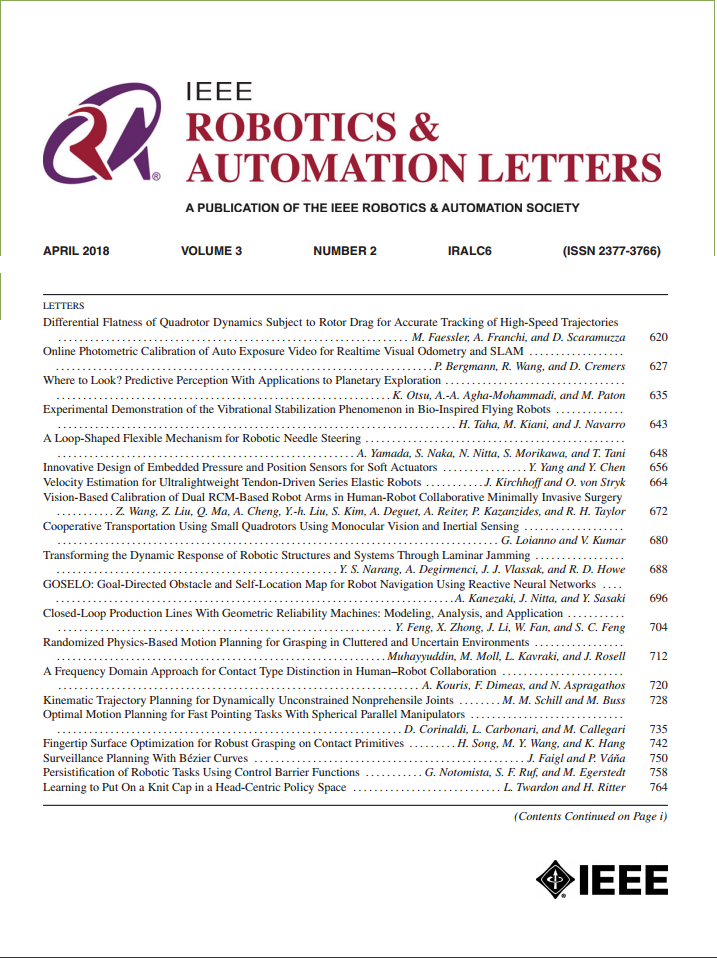SoftTex: Soft Robotic Arm With Learning-Based Textile Proprioception
IF 4.6
2区 计算机科学
Q2 ROBOTICS
引用次数: 0
Abstract
Soft robots are promising in biomedical applications thanks to their inherent structural compliance and distributed large deformations. However, integrating a sensory system that maintains the robot's dexterity while offering accurate state estimation remains an open challenge for their widespread adoption. This letter presents SoftTex, a small-scale soft robotic arm built with textile fabrics. SoftTex redesigns the STIFF-FLOP soft manipulator to favor affordable, rapid, and repeatable fabrication methods, facilitating the integration of a proprioceptive system based on piezoresistive textile strips preserving the soft arm compliance. First, we characterized the bending and stretching capabilities of the soft robotic arm and its workspace. The force tests demonstrated effectiveness for potential biomedical applications, revealing pulling forces ranging from 3.4–7.4 N and pushing forces from 2–7.5 N. Finally, we leveraged actuation, motion, and proprioceptive data collected with an open-loop controller to develop a position state estimator using a parallel recurrent neural network trained with supervised curriculum learning. The proprioceptive network achieves an average prediction error of求助全文
约1分钟内获得全文
求助全文
来源期刊

IEEE Robotics and Automation Letters
Computer Science-Computer Science Applications
CiteScore
9.60
自引率
15.40%
发文量
1428
期刊介绍:
The scope of this journal is to publish peer-reviewed articles that provide a timely and concise account of innovative research ideas and application results, reporting significant theoretical findings and application case studies in areas of robotics and automation.
 求助内容:
求助内容: 应助结果提醒方式:
应助结果提醒方式:


